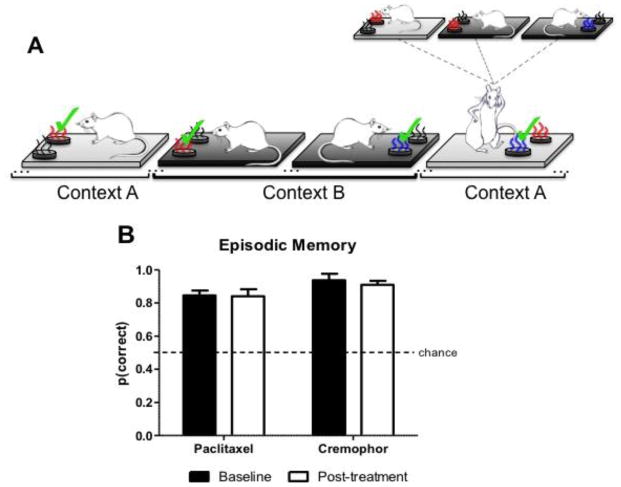Fig. 3.
(A) Schematic depicting olfactory item-in-context memory procedure. Episodic item-in-context memory is dissociated from familiarity cues. Strawberry and blueberry odors are depicted here as red and blue, respectively. The “new” item in context odor is denoted by “✓“ and “old” odors previously presented in context earlier in the session are represented in grey. The presence of additional odors not shown is represented by “…” in the schematic. In the episodic memory assessment, the rats were given a choice between strawberry and blueberry. The correct item-in-context choice is blueberry because blueberry has not yet been presented in context A, even though blueberry is more familiar than strawberry. Trials depicted in (A) were randomly intermingled throughout the episodic memory part of the session. Our measure of accuracy is the proportion of choices where the “new” item-in-context odor is selected. (B) Intact item-in-context episodic memory performance is represented by a high proportion correct in the episodic memory assessment. Data are expressed as mean ± SEM (n=5–6 per group).

